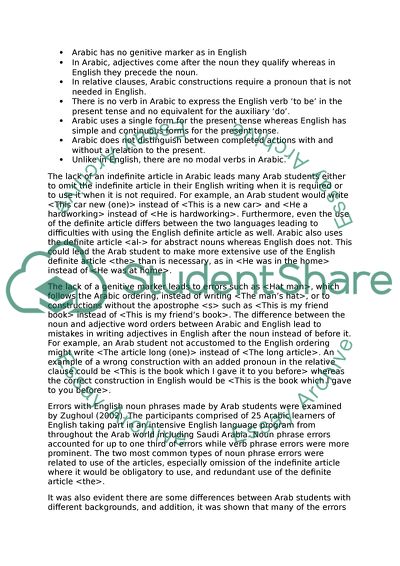Cite this document
(Grammatical Errors of Saudi Students in English Assignment, n.d.)
Grammatical Errors of Saudi Students in English Assignment. Retrieved from https://studentshare.org/education/1755688-grammatical-errors-of-saudi-arabia-students-in-english-language-tesol-teaching-english-as-a-second-language
Grammatical Errors of Saudi Students in English Assignment. Retrieved from https://studentshare.org/education/1755688-grammatical-errors-of-saudi-arabia-students-in-english-language-tesol-teaching-english-as-a-second-language
(Grammatical Errors of Saudi Students in English Assignment)
Grammatical Errors of Saudi Students in English Assignment. https://studentshare.org/education/1755688-grammatical-errors-of-saudi-arabia-students-in-english-language-tesol-teaching-english-as-a-second-language.
Grammatical Errors of Saudi Students in English Assignment. https://studentshare.org/education/1755688-grammatical-errors-of-saudi-arabia-students-in-english-language-tesol-teaching-english-as-a-second-language.
“Grammatical Errors of Saudi Students in English Assignment”, n.d. https://studentshare.org/education/1755688-grammatical-errors-of-saudi-arabia-students-in-english-language-tesol-teaching-english-as-a-second-language.


